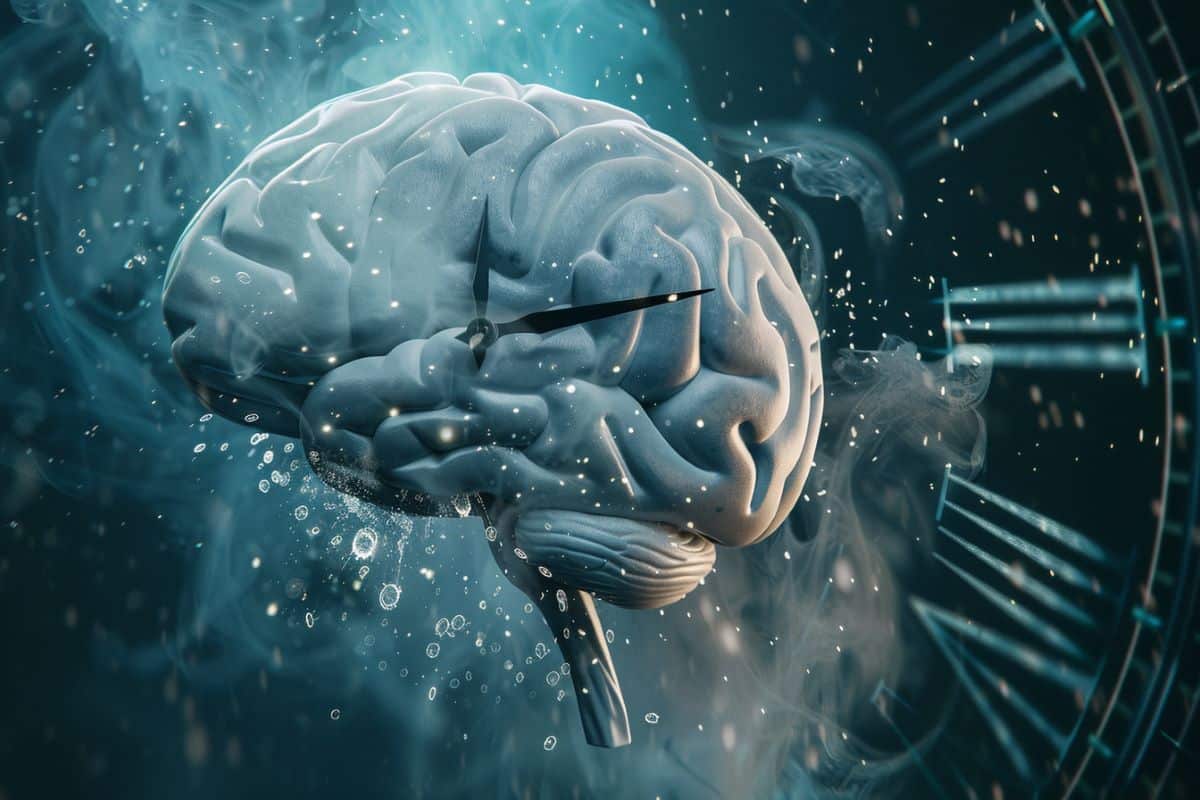Summary: New research reveals that “time cells” in the brain, crucial for learning complex behaviors requiring precise timing, are not just simple timekeepers. These cells adapt their firing patterns as mice learn to distinguish between differently timed events, suggesting a more complex role in processing temporal information. This discovery could aid in early detection of neurodegenerative diseases like Alzheimer’s.
Key Facts:
- Time cells fire in sequence to map out short periods of time.
- These cells change their activity patterns as mice learn complex time-based tasks.
- Time cells are essential for learning but not for simple time perception.
Source: University of Utah
A sense of time is fundamental to how we understand, recall, and interact with the world. Tasks ranging from holding a conversation to driving a car require us to remember and perceive how long things take—a complex but largely unconscious calculation running constantly beneath the surface of our thoughts.
Now, researchers at University of Utah Health have found that, in mice, a specific population of “time cells” is essential for learning complex behaviors where timing is critical. Like the second hand of a clock, time cells fire in sequence to map out short periods of time.

But time cells aren’t just a simple clock, the researchers found—as animals learn to distinguish between differently timed events, the pattern of time cell activity changes to represent each pattern of events differently. The discovery could ultimately aid in early detection of neurodegenerative diseases, such as Alzheimer’s, that affect the sense of time.
The new study is published in Nature Neuroscience.
Mouse code
By combining a complex time-based learning task with advanced brain imaging, researchers were able to watch patterns of time cell activity become more complex as the mice learned. The researchers first set up a trial where learning the differences in the timing of events was critical. To get a reward, mice had to learn to distinguish between patterns of an odor stimulus that had variable timing, as if they were learning a very simple form of Morse code.
Before and after the mice learned, the researchers used cutting-edge microscopy to watch individual time cells fire in real time. At first, their time cells responded in the same way to every pattern of odor stimulus. But as they learned the differently timed patterns of stimulus, the mice developed different patterns of time cell activity for each pattern of events.
Notably, during trials that the mice got wrong, the researchers could see that their time cells had often fired in the wrong order, suggesting that the right sequence of time cell activity is critical for performing time-based tasks.
“Time cells are supposed to be active at specific moments during the trial,” said Hyunwoo Lee, PhD, postdoctoral fellow in neurobiology in the Spencer Fox Eccles School of Medicine at the University of Utah and co-first author on the study.
“But when the mice made mistakes, that selective activity became messy.”
Not just a stopwatch
Surprisingly, time cells play a more complicated role than merely tracking time, said Erin Bigus, graduate research assistant in neurobiology and co-first author on the study.
When the researchers temporarily blocked the activity of the brain region that contains time cells, the medial entorhinal cortex (MEC), mice could still perceive and even anticipate the timing of events. But they couldn’t learn complex time-related tasks from scratch.
“The MEC isn’t acting like a really simple stopwatch that’s necessary to track time in any simple circumstance,” Bigus said. “Its role seems to be in actually learning these more complex temporal relationships.”
Intriguingly, prior research on the MEC found that it’s also involved in learning spatial information and building “mental maps.” In the new study, researchers noticed that the patterns of brain activity that occur while learning time-based tasks show some similarities to previously observed patterns involved in spatial learning; aspects of both patterns persist even while an animal isn’t actively learning.
While more research is needed, these results suggest that the brain could process space and time in fundamentally similar ways, according to the researchers.
“We believe that the entorhinal cortex might serve a dual purpose, acting both as an odometer to track distance and as a clock to track elapsed time,” said James Heys, PhD, assistant professor in neurobiology and the senior author on the study.
“These are the first areas of the brain to be affected by neurodegenerative diseases like Alzheimer’s. We are interested in exploring whether complex timing behavior tasks could be a useful way to detect the early onset of Alzheimer’s disease.” – James Heys
Learning how the brain processes time could ultimately aid in the detection of neurodegenerative diseases such as Alzheimer’s, the researchers say. The MEC is one of the first areas of the brain that Alzheimer’s affects, hinting that complex timing tasks could potentially be a way to catch the disease early.
Funding: Support was provided by the Whitehall Foundation, Brain and Behavior Research Foundation, the National Institutes of Health, and the National Science Foundation.
About this neuroscience and learning research news
Author: Sophia Friesen
Source: University of Utah
Contact: Sophia Friesen – University of Utah
Image: The image is credited to Neuroscience News
Original Research: Closed access.
“Medial entorhinal cortex mediates learning of context-dependent interval timing behavior” by Hyunwoo Lee et al. Nature Neuroscience
Abstract
Medial entorhinal cortex mediates learning of context-dependent interval timing behavior
Episodic memory requires encoding the temporal structure of experience and relies on brain circuits in the medial temporal lobe, including the medial entorhinal cortex (MEC). Recent studies have identified MEC ‘time cells’, which fire at specific moments during interval timing tasks, collectively tiling the entire timing period.
It has been hypothesized that MEC time cells could provide temporal information necessary for episodic memories, yet it remains unknown whether they display learning dynamics required for encoding different temporal contexts. To explore this, we developed a new behavioral paradigm requiring mice to distinguish temporal contexts.
Combined with methods for cellular resolution calcium imaging, we found that MEC time cells display context-dependent neural activity that emerges with task learning.
Through chemogenetic inactivation we found that MEC activity is necessary for learning of context-dependent interval timing behavior. Finally, we found evidence of a common circuit mechanism that could drive sequential activity of both time cells and spatially selective neurons in MEC.
Our work suggests that the clock-like firing of MEC time cells can be modulated by learning, allowing the tracking of various temporal structures that emerge through experience.






